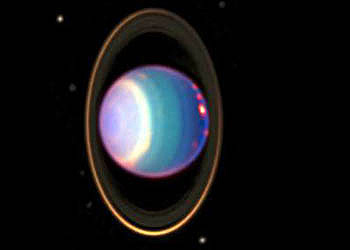

|
Документ взят из кэша поисковой машины. Адрес
оригинального документа
: http://www.stsci.edu/~inr/thisweek1/thisweek176.html
Дата изменения: Fri Jun 8 23:36:03 2007 Дата индексирования: Tue Oct 2 14:07:25 2012 Кодировка: Поисковые слова: п п п п п п п п п п п п п п п п п п п п п п п п п п п п |


| Program Number | Principal Investigator | Program Title | Links |
| 10132 | Scott Anderson, University of Washington | UV Confirmation of New Quasar Sightlines Suitable for the Study of Intergalactic Helium | Abstract |
| 10143 | I. Neill Reid, Space Telescope Science Institute | Ultracool companions to the nearest L dwarfs | Abstract |
| 10173 | William Sparks, Space Telescope Science Institute | Infrared Snapshots of 3CR Radio Galaxies | Abstract |
| 10519 | Janet Simpson, NASA Ames Research Center | Testing the Stellar Coalescence and Accretion Disk Theories of Massive Star Formation with NICMOS | Abstract |
| 10527 | Dean Hines, Space Science Institute | Imaging Scattered Light from Debris Disks Discovered by the Spitzer Space Telescope Around 20 Sun-like Stars | Abstract |
| 10534 | Kathy Rages, SETI Institute | Active Atmospheres on Uranus and Neptune | Abstract |
| 10544 | David Bennett, University of Notre Dame | Resolved Images of LMC Microlensing Events Observed by a Telescope at 2 AU from Earth | Abstract |
| 10551 | Shri Kulkarni, California Institute of Technology | Gamma-Ray Bursts from Start to Finish: A Legacy Approach | Abstract |
| 10611 | George Benedict, University of Texas at Austin | Precise Distances to Nearby Planetary Nebulae | Abstract |
| 10612 | Douglas Gies, Georgia State University Research Foundation | Binary Stars in Cyg OB2: Relics of Massive Star Formation in a Super-Star Cluster | Abstract |
| 10808 | Pieter van Dokkum, Yale University | Morphologies of spectroscopically-confirmed red and dead galaxies at z~2.5 | Abstract |
| 10849 | Stanimir Metchev, University of California - Los Angeles | Imaging Scattered Light from Debris Disks Discovered by the Spitzer Space Telescope around 21 Sun-like Star | Abstract |
| 10899 | Matthew Malkan, University of California - Los Angeles | Identifying z>7 galaxies from J-dropouts | Abstract |
| 10906 | Sylvain Veilleux, University of Maryland | The Fundamental Plane of Massive Gas-Rich Mergers: II. The QUEST QSOs | Abstract |
| 10925 | John Stocke, University of Colorado at Boulder | Imaging the Nearest Damped Lyman Alpha Absorbers | Abstract |
GO 10143: Ultracool companions to the nearest L dwarfs
GO 10173: Multicolour snapshot observations of 3C Radio Galaxies
GO 10551: Gamma-Ray Bursts from Start to Finish: A Legacy Approach A
GO 10534 Active Atmospheres on Uranus and Neptune
 Nicmos image of aurorae on Uranus
Nicmos image of aurorae on Uranus
|
The atmospheres of the gas giant planets in the solar system are dynamic entities that can exhibit dramatic changes over a variety of timescales. Those changes are most apparent in Jovian atmosphere, which displays a wide variety of bands and spots, reflecting complex meteorological phenomena (see, e.g., previous ACS observations of the upper atmosphere and of the new little red spot ). This is not surprising since Jupiter atmosphere receives the highest input of solar energy. However, secular variations are also evident in the atmospheres of the outer planets, albeit usually at a more subtle level. The present program aims to monitor atmospheric changes in the two outermost gas giants, Uranus and Neptune. Both exhibit long-term seasonal variations, whose origins are not yet well understood; both are capable of generating dark spots - phenomena that are presumably related to Jupiter's Great Red Spot and Saturn's Great White Spot. The present observations use a variety of filters on ACS and WFPC2 (notably the 619 nm methane filter) to probe conditions are a variety of levels within the planetary atmospheres. |